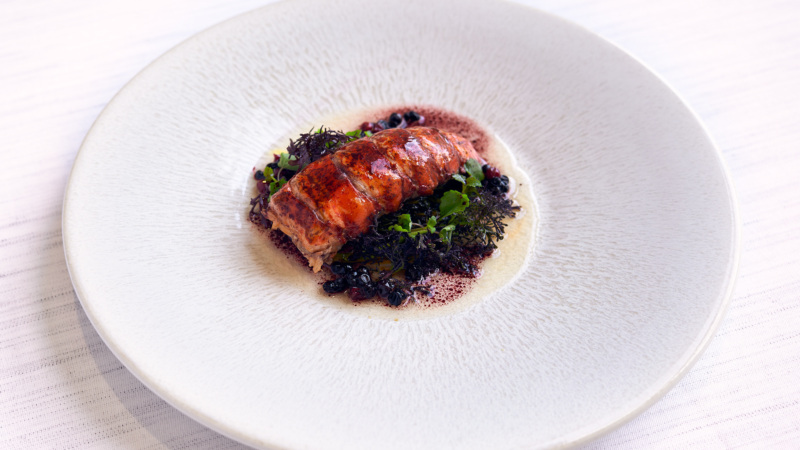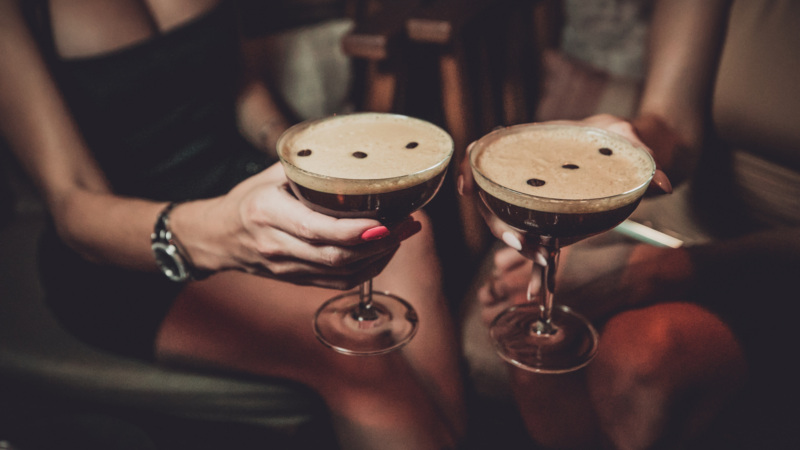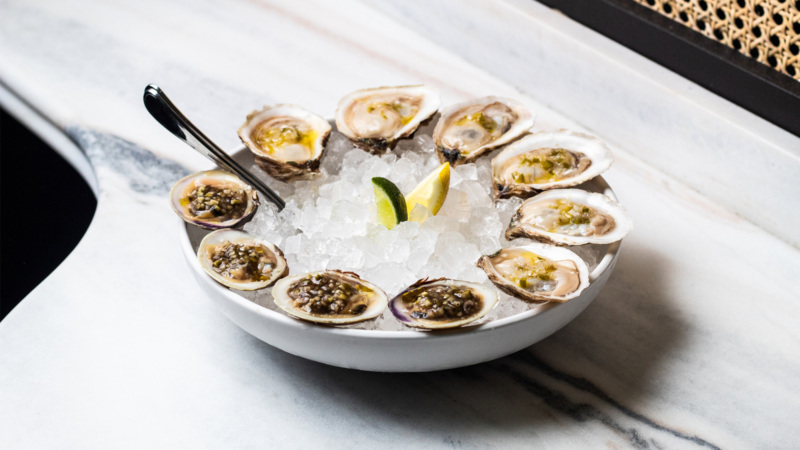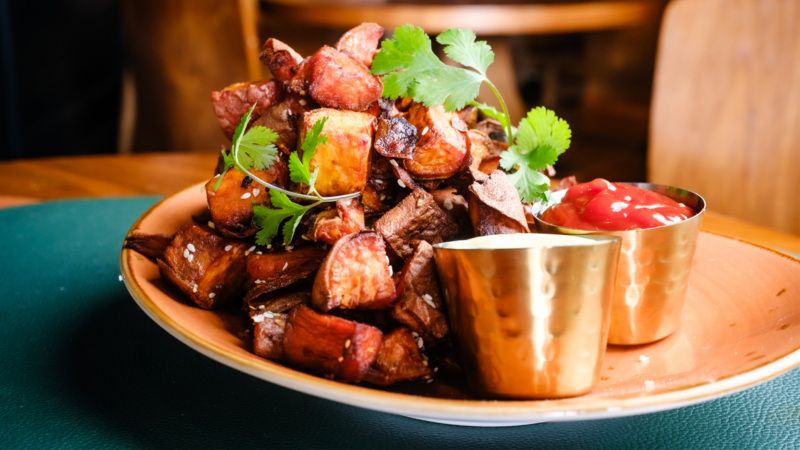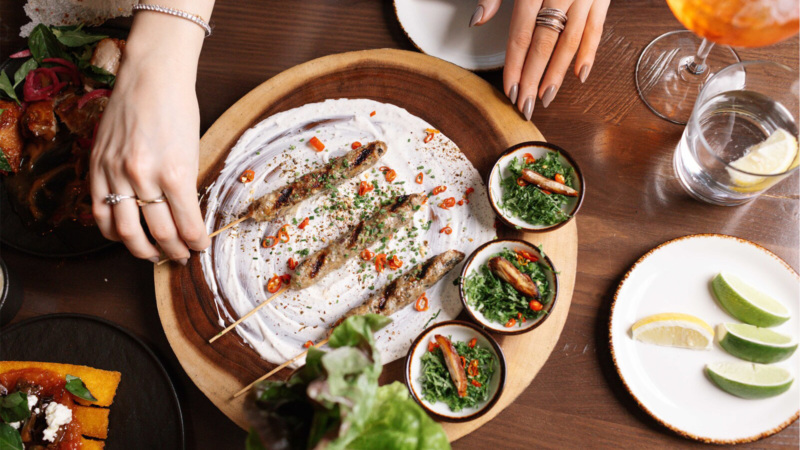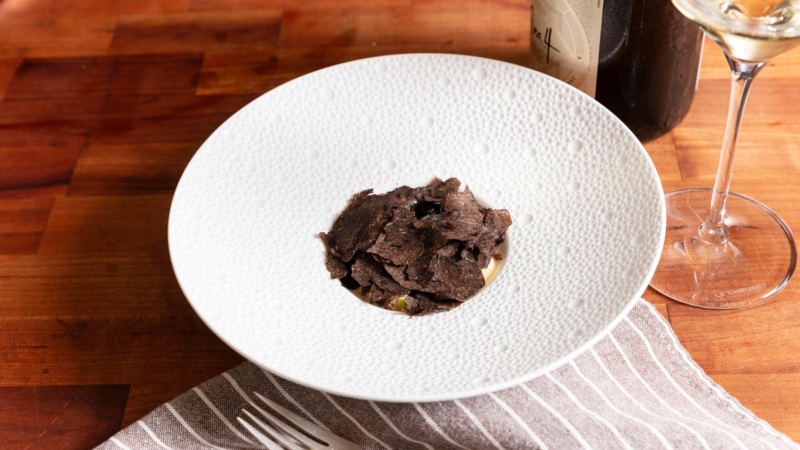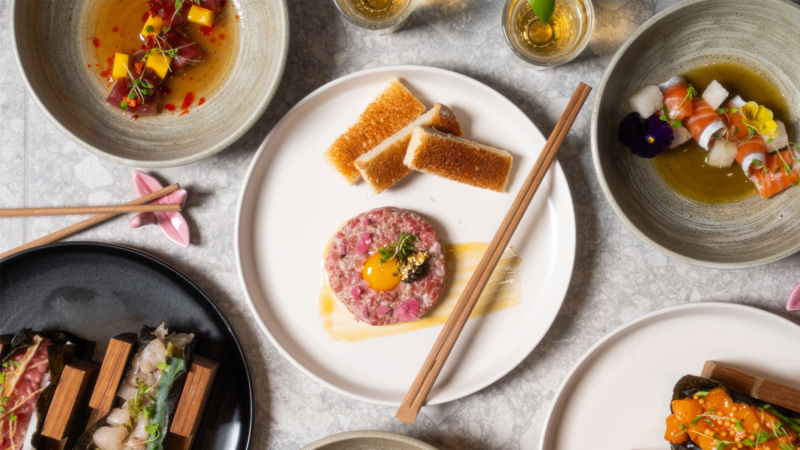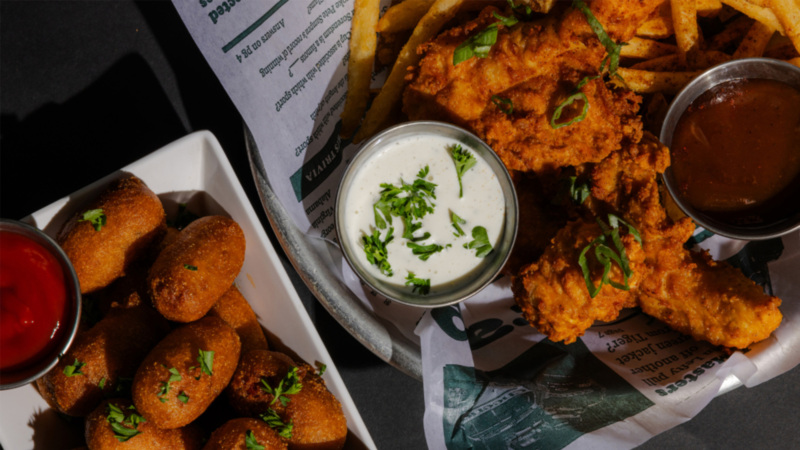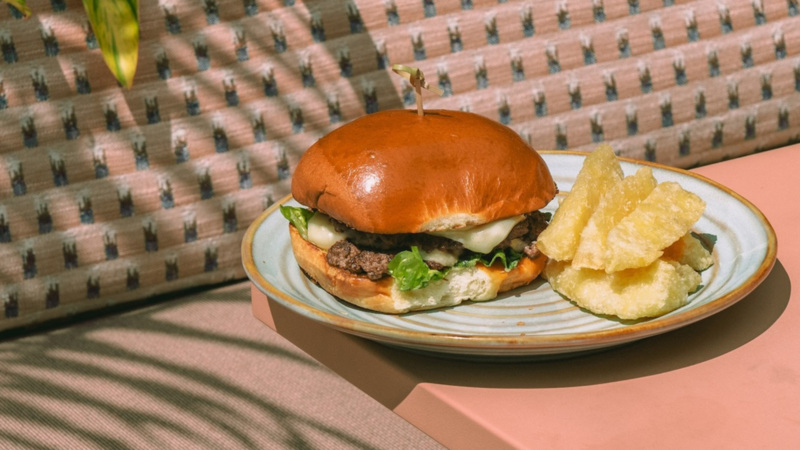
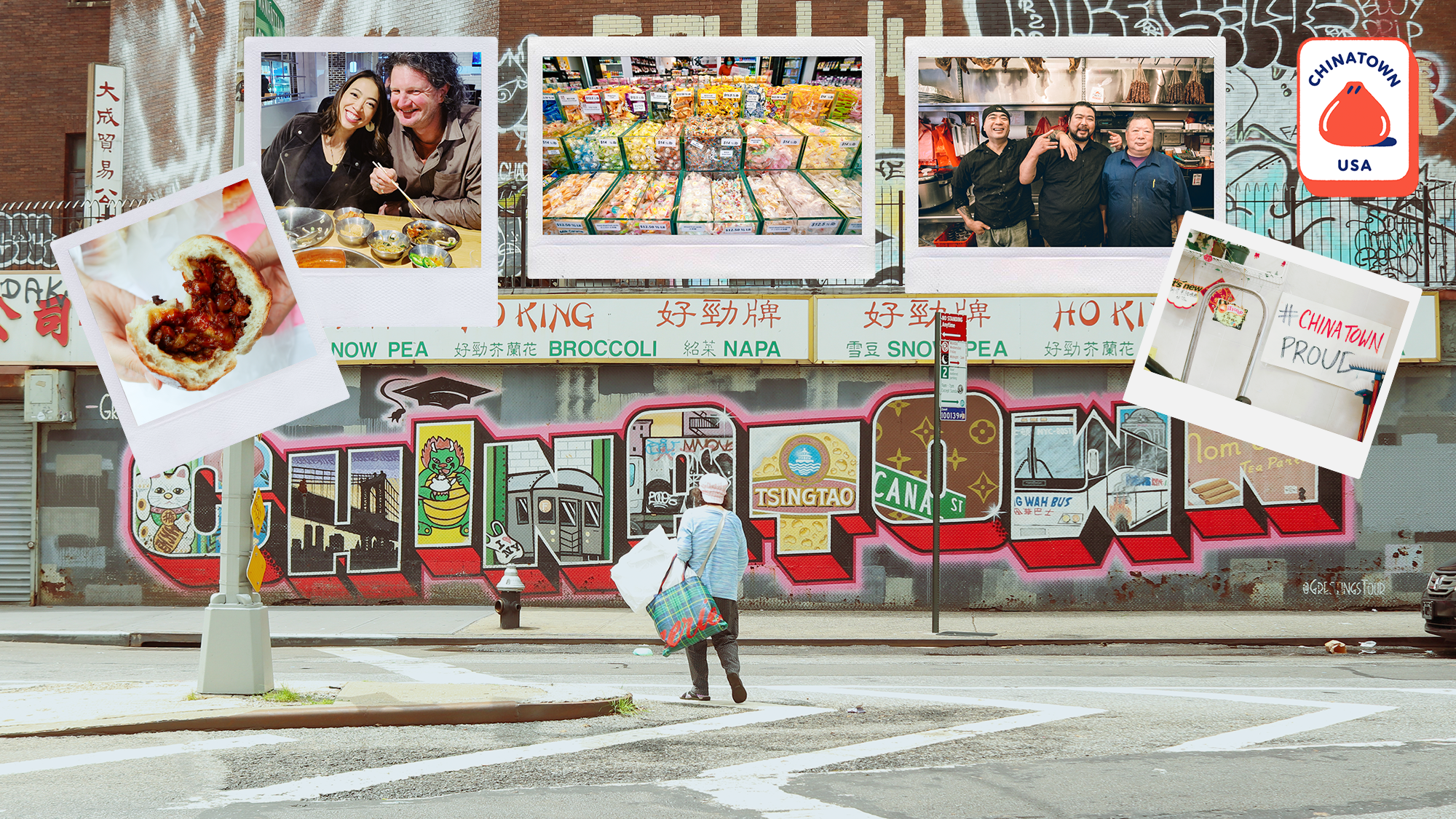
Welcome to Chinatown USA
For nearly two centuries, Chinatowns have been an essential part of American communities. If they began in the 1840s as safe havens for Chinese immigrants, the only places where they could make ends meet, they have remained vital parts of our cities ever since — neighborhoods where Americans could find opportunity, discovery, reinvention.
Neighborhoods where we all have come together to eat.
Chinese American history often has been defined through food, and that is no coincidence. As successive generations of Chinese settled in the United States, they not only brought their traditional dishes, but also created a new cuisine unique to these shores — dishes like chop suey, egg foo young, mu shu pork. These dishes reflected both roots and American tastes, and Americans of every sort have been nourished on them seemingly forever.
And yet, if you still can find these tributes to history in restaurants like New York’s Wo Hop or San Francisco’s Sam Wo, the country’s Chinatowns have continued to evolve and grow. Today, we talk not simply of Chinese food, or even of Cantonese and Sichuan, but of the cooking of Hunan, Yunnan, Dongbei, Taiwan, and beyond. Second- and third-generation Americans, and new immigrant restaurateurs, keep redefining what Chinese food means to Americans.
CHINATOWN USA was born out of our love at Resy for this most American of endeavors — but also as a call to action. Chinatowns across the nation have been devastated by the pandemic. Their businesses, and Chinese restaurants everywhere, are struggling to survive. It felt necessary, then, to share reminders of how much these places matter to all of us, which in turn means we all have a responsibility to help them survive.
After all, Chinese food is American food. (And British food, and Australian food, and so on.) We’ve come to share stories of why that is very much so.
▪️
CHINATOWN IS OUR TOWN
Deanna Ting
Chinatowns have changed the way we dine, across America and around the globe, giving us everything from the Lazy Susan to sesame noodles. Even the oldest of Chinatown restaurants have found ways to meet the 21st century, as with New York’s Nom Wah Tea Parlor, while a new generation of chefs is offering a far more personal take on Chinese American cooking. These neighborhoods have managed to survive wars, bigotry, economic woes. But they need our help to endure.
THE WONDER OF CHINESE AMERICAN FOOD, IN FIVE DISHES
Michael Lin
Chinese American cuisine parallels the Chinese American experience — a unique, sometimes blurred identity. Some dishes, like kung pao chicken, have a home in Sichuan; others, like cashew chicken, were invented in Missouri. In five dishes, we consider the history of hybridized cuisine, from coast to coast.
IN BOSTON’S CHINATOWN, BRIAN MOY IS BUILDING A FUTURE WITHOUT LOSING THE PAST
Ellen Bhang
The owner of Boston’s popular Shojo is also in charge of his family’s other restaurants, including China Pearl, the city’s oldest extant Chinese restaurant. He has navigated between the community’s strong pull of tradition, and a need to appeal to a broader, modern audience.
HAS EIGHT TABLES PREDICTED THE FUTURE OF FINE DINING?
Jonathan Kauffman
George Chen’s new San Francisco restaurant reveals its sparse layout in its name — the ultimate in semi-private dining, based on the private sifangcai dinners of Hong Kong and Shanghai. At a time when privacy and distance are the new luxury, it’s possible his strategy of tasting menus for just a handful of customers per night is pitch-perfect for a Post-COVID world.
CHINATOWNS EVERYWHERE ARE SUFFERING. IN OAKLAND, A NEW GENERATION HAS ANSWERS
Momo Chang
Whether running a fish market, pivoting a landmark grocery to sell CSA boxes that suit non-Western tastes, or adapting longtime restaurants to a pandemic world, a young generation in the Chinatown across the Bay has avoided the worst of the economic trauma that COVID has wrought.
ALL BRANDON JEW WANTS IS FOR CHINESE RESTAURANTS TO KNOW THEIR WORTH
MacKenzie Chung Fegan
The San Francisco chef’s latest restaurant is called Mamahuhu, or “so-so.” This might seem odd for an ambitious restaurateur, until you realize it’s a tribute to the Chinese ethic of humility. And it captures Jew’s conflicted views about being a Chinese American chef today: That pull of modesty is in conflict with the desire to reform a restaurant culture that perennially undervalues Chinese food.
THE MEANING OF A DISH: ‘PHOENIX CLAWS’
Cathy Erway
If the phoenix claws — aka chicken feet — were good on a particular day at one of the banquet hall-type Cantonese restaurants we frequented in New Jersey, then our essayiest was determined to eat more than her fill. Because there was no way they were going to be cooked at home.
THE MEANING OF A DISH: HONEY WALNUT SHRIMP
Melissa Hung
This popular specialty might seem too sweet and unusual to be anything but an American creation. But guess again: More than likely it was a genuine Cantonese creation, part of the innovative Hong Kong cooking of the 1990s. That doesn’t make its taste any less sentimental.
THE MEANING OF A DISH: TAIWANESE BREAKFAST
Esther Tseng
Growing up in the Midwest, hot soy milk, the flaky crullers known as you tiao, shao bing and more telegraphed the tastes of a family home in Taiwan. Now, in Los Angeles, those same dishes provide a similar sense of comfort.
ONE FAMILY’S STORY, FROM TOISAN TO WICHITA
Deanna Ting
Young Mar arrived in San Francisco’s Chinatown in 1920 at the age of seven. Everything he learned thereafter, he taught himself. By the 1950s, he and his business partner had opened two Chinese restaurants in Kansas. The story likely sounds familiar to you — an immigrant tale of someone trying to make it. But it’s also the story of a grandfather who never got to meet his granddaughter.
NEW YORK
THE RESY GUIDE TO MANHATTAN CHINATOWN, BY THOSE WHO LOVE IT BEST
Noëmie Carrant
New York City’s original Chinatown, established in the 1870s, does not kid around. And for over 150 years, food has been a constant, from dim sum parlors and cha chaan tengs (Hong Kong-style cafés), to noodle shops and barbecue stalls. We asked locals for their can’t-miss spots to eat in the city’s OG.
THE ULTIMATE GUIDE TO BROOKLYN’S CHINATOWN, ACCORDING TO STEPHANIE SHIH
Noëmie Carrant
Brooklyn’s Sunset Park has quickly grown into one of New York’s largest Chinatowns — part of one of the borough’s most diverse neighborhoods. The artist Stephanie Shih is a frequent visitor, and took us on her tour of the best spots for soy sauce chicken, Sichuanese food, popcorn chicken, banh mi, and more.
THE RESY GUIDE TO FLUSHING CHINATOWN, BY THOSE WHO LOVE IT BEST
Max Falkowitz
If Manhattan’s Chinatown is steeped in history, Queens’ largest Chinatown — contending for the city’s most vibrant — is a blur of nonstop change. This is not only a neighborhood where New Yorkers dive into a full range of regional Chinese cuisines, but also one that shows a keen attention to global trends, and a deep bond with mainland China and all Asia. Manicure while you wait for your hot pot, anyone?
THE RESY GUIDE TO A CHINESE BANQUET-STYLE CHRISTMAS IN NEW YORK
Noëmie Carrant
Perhaps this is the year take a page from the Jewish holiday playbook. Not frying up latkes or making sufganiyot from scratch for Hanukkah — we’re talking about the hallowed tradition of Chinese food on Christmas day. Venturing to any of the city’s Chinatowns this holiday season is a chance to support some of the neighborhoods most affected by the pandemic. And they happen to have some of the best holiday takeout deals in town.
HUNAN SLURP IS TELEGRAPHING THE TASTES OF HOME, NOW MORE THAN EVER
Deanna Ting
Lu Dong and Chao Wang, who both came to New York as students, opened Hunan Slurp in the East Village to revive tastes of home — in Dong’s case, the coastal province of Zhejiang, while Wang was from Hunan. Their style of cuisine was interpretive and unique, and during the pandemic, its transportive ability has become truly essential.
THE ENDURING VALUE OF NEW YORK’S OLDEST CHINESE RESTAURANT
Jon Bonné
For many New Yorkers, Nom Wah Team Parlor has always been a part of our lives. That includes not just its current fame, or even its longtime role in teaching many people about what was known as yum cha, now familiar to Americans as dim sum — but also its survival for a century through the city’s ups and downs. And as much as it represents the history of Chinatown, its recent growth also shows how tradition and progress can coexist.
SLEEPER HITS: THE CHINATOWN EDITION
Noëmie Carrant
In this special edition of our “Sleeper Hits,” series, we ask chefs at Jing Fong, Little Alley, and Hwa Yuan Szechuan about the dishes on their menus you probably don’t know — but should.
ASSEMBLYWOMAN YUH-LINE NIOU SHARES HER SECRET CHINATOWN LIST
Deanna Ting
New York State Assemblywoman Yuh-Line Niou, who represents Manhattan’s Chinatown and Financial District, did something she never thought she’d do: She started revealing her favorite, often little-known spots to eat, using the Twitter hashtag, #NiouYorkEats. We persuaded her to go one step further, and share an unabridged version of her favorites with us.
FIVE REGULARS ON WHY WO HOP STILL MATTERS
Noëmie Carrant
You don’t live to be an 82-year-old restaurant and not develop some sort of a following. Especially if you’re the second-oldest restaurant in Manhattan’s Chinatown. Everyone has their reasons, including the famed upstairs-downstairs rivalry. (If you know, you know.)
GREAT NY NOODLETOWN IS EVERYTHING THAT MAKES NEW YORK SPECIAL
Noëmie Carrant
Open late, cash only, and willfully Cantonese in its focus, here’s a restaurant that since 1981 has been a haven for anyone who needs a solid meal downtown — a diner that pays tribute to Chinatown at its best.
46 MOTT’S PATRICK MOCK JUST WANTS TO KEEP CHINATOWN ALIVE
Deanna Ting
The general manager of the popular Cantonese-style bakery, a lifelong Chinatown resident, discusses what restaurants need to survive, and how he’s been feeding locals during the current crisis.
A BLOCK OF OUTDOOR DINING SEEKS TO REVIVE THE NEIGHBORHOOD
Noëmie Carrant
Where Mott St. meets Grand St., po-pos pushing granny carts have reclaimed a key Chinatown intersection, as they haggle their way through vegetable stalls. Keep going, to the end of Mott, and you’ll find a block closed from traffic, and designed to let people come back to the neighborhood and eat outside.
CHICAGO
THE RESY GUIDE TO CHICAGO CHINATOWN, BY THOSE WHO LOVE IT BEST
Kevin Pang
Chicago’s “Second City” moniker extends to its Chinatown. By population and business density, it’s no Manhattan or San Francisco. And yet, this compact neighborhood has welcomed restaurants devoted to Yunnan and Taiwanese cuisine, places specializing in hand-pulled noodles. We sought the opinions of Chicago notables, and a theme emerged: This is a Chinatown that punches above its weight.
EIGHT DISHES THAT TELL THE STORY OF CHICAGO’S CHINATOWN
Kevin Pang
A perfect trip to the city’s Chinatown begins at Ping Tom Park, where you can easily walk to many of its best meals. From chop suey that dates to the turn of the 20th century, to popcorn chicken that represents a new influx of Taiwanese entrepreneurs, here’s a walking tour through eight dishes that define the neighborhood’s past — and future.
SAN FRANCISCO
THE RESY GUIDE TO SAN FRANCISCO CHINATOWN, BY THOSE WHO LOVE IT BEST
Momo Chang
So much can be said about the few blocks in the heart of San Francisco that make up Chinatown, a neighborhood that survived the 1906 earthquake, the Exclusion Act and more. It remains a gateway for food, but also into the tolerance that this city has long worked to embody.
SIX DISHES THAT TELL THE STORY OF SAN FRANCISCO’S CHINATOWN
Jonathan Kauffman
The country’s oldest Chinatown has been incorporating American traditions and tastes into its cuisine since the very beginning. On a brief walking tour, you can discover some of the historic dishes that still tell the tale of its evolution.
MERE PORTALS: THE DOORWAYS & DISHES OF CHINATOWN
Pete Lee
If you like mysteries, Chinatown’s got mysteries. For every mystery answered, two new ones open up. But its food, and its doorways, provide clues. A visual look at a neighborhood full of mysteries.
HANG AH REMAINS ENTWINED IN THE ROOTS OF CHINATOWN
Tienlon Ho
The West Coast’s first dim sum parlor was founded a century ago. For anyone who grew up in San Francisco Chinagtown, it remains a landmark that defines many memories. And it remains, nearly unchanged by time. (Nearly. There’s a window now.)
LOS ANGELES
THE RESY GUIDE TO L.A.’S CHINESE RESTAURANTS, BY THOSE WHO LOVE THEM BEST
Esther Tseng
Yes, L.A. has one of the largest Chinese American communities in the United States. And yes, the San Gabriel Valley has become its focal point. But there still is L.A.’s actual Chinatown, a few blocks squeezed between the 110 and the 101. And it remains a thriving, evolving community of its own. We offer some can’t-miss stops.
EIGHT RESTAURANTS THAT TELL THE STORY OF THE SAN GABRIEL VALLEY
Kristie Hang
The San Gabriel Valley, just east of L.A., has become known as the place to find some of the best and most diverse examples of Chinese cuisine in the country. But the history of the 626 is more complex than you might think. Here, a driving tour of eight spots that help to explain its blossoming into a food-lover’s paradise.
HOW GENGHIS COHEN WON HEARTS, ONE EGG ROLL (AND A BIG HELPING OF SHTICK) AT A TIME
Lesley Balla
This “New York Chinese” restaurant-slash-music-venue has become an institution over nearly 40 years in the Fairfax neighborhood — a success attributable to the love of Chinese American classics, to deep L.A. music connections, and to a deep bond between the Chinese and Jewish communities. None of this was lost on its new owners, who barely changed a thing (except for upping their cocktail game).
FORMOSA CAFE IS A MASTERCLASS IN RESTORATION
Lesley Balla
Like an aging Hollywood star, the Formosa Cafe’s light may have dimmed a bit over the years, since its 1939 opening, but it never truly went out. It required a multimillion-dollar renovation to save a place that could never be recreated today.
AROUND THE COUNTRY
THE RESY GUIDE TO PORTLAND’S CHINATOWNS, BY THOSE WHO LOVE THEM BEST
Samantha Bakall
Visitors to downtown Portland, Ore., might see the city’s Chinatown gate as a sign of its longtime presence. In fact, it is a recent creation, born out of the city’s original Japantown. While there’s plenty to be found there, much of the Chinese American community is now thriving in the Jade District. We got great recommendations to visit in both.
THE RESY GUIDE TO SEATTLE’S INTERNATIONAL DISTRICT, BY THOSE WHO LOVE IT BEST
JiaYing Grygiel
Asian immigrants have been coming to Seattle since its founding in the 1850s, with many Chinese settlers moving to the neighborhood now known as the International District. That’s no longer the sole heart of the city’s Chinese American community — and it has diversified, with big Vietnamese and Korean populations. A visit knits together the city’s past and present.
… AND BEYOND
THE RESY GUIDE TO LONDON’S CHINESE RESTAURANTS, BY THOSE WHO KNOW THEM BEST
David Paw
Today, London hosts remarkable examples of various Chinese cuisines in every corner, from Holborn to Barnet to Brixton. The next generation of chefs and writers share their favorites around the city.
LONDON NO LONGER HAS ONE CHINATOWN. IT HAS MANY.
Angela Hui
Chinese migration has played a central part in changing the UK’s culinary culture, and if London’s Chinatown, in Soho, once was a focal point of British Chinese culture, it has spread to many other neighborhoods — even back to the East London docks that many 19th-century settlers called home.
CHINATOWN’S OLD SOUL, IN A BOWL OF BRISKET NOODLE SOUP
David Paw
Wong Kei was once known as the rudest restaurant in London. But its brisket noodle soup was a deep dose of comfort for one wayward university student — and a reminder that such cafés in Soho’s old Chinatown were the British renditions of Hong Kong’s beloved dai pai dongs, or open air food stalls.
AT HUNAN, GUESTS ARE FAMILY — AND FAMILY ALWAYS COMES FIRST
David Paw
Y.S. Peng’s unique spot on Pimlico Road is in fact Taiwanese in its focus — but legendary today for its “Leave It to Us” tasting menu, and the deep wine selections chosen by Peng’s son Michael. The Pengs have paved a path forward for everything that modern London Chinese restaurants can be.
CHINATOWN HAS ALWAYS MADE US FEEL AT HOME. FEW KNOW THAT MORE THAN SYDNEY’S STUDENTS
Nancy Lee
The Chinatown in this major Australian city has played a special role — as home away from home to its outsized population of international students, many of them from mainland China. COVID has challenged its restaurants like never before.
We’ll be publishing new stories on an ongoing basis. Check back often for updates.
▪️
Staff Writers/Editors: Noëmie Carrant, David Paw, Deanna Ting
Contributors: Samantha Bakall, Lesley Balla, Momo Chang, Emily Chen, Karissa Chen, Mukta Das, Cathy Erway, Max Falkowitz, MacKenzie Fegan, Amanda Giuffre, JiaYing Griegel, Kristie Hang, Tienlon Ho, Melissa Hung, Angela Hui, Nancy Lee, Pete Lee, Michael Lin, Kevin Pang, Jeannie Phan, Ming Tang-Evans, Esther Tseng
Project Editor: Jon Bonné
Photo/Art/Design: Tania Bou Samra, Molly Tavoletti
West Coast Editor: Jonathan Kauffman
Editorial Director: Paolo Lucchesi
Chinatown USA Logo: Paulina Ho
Discover More


